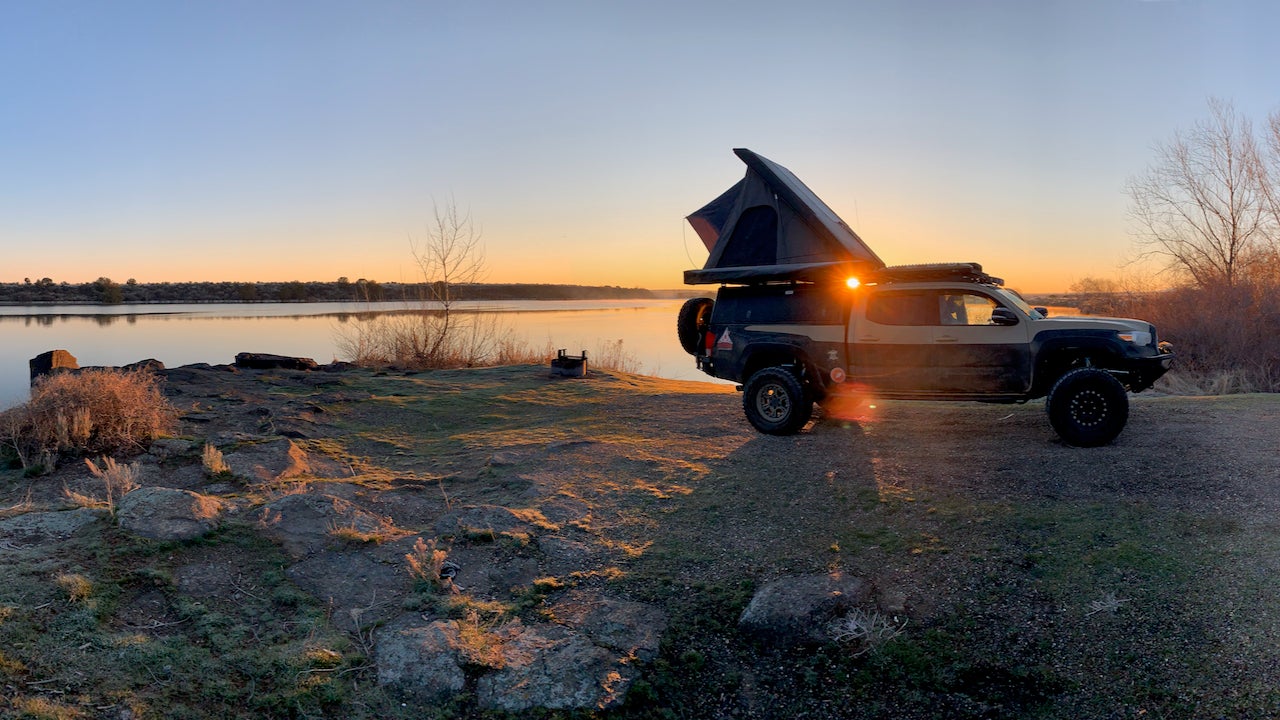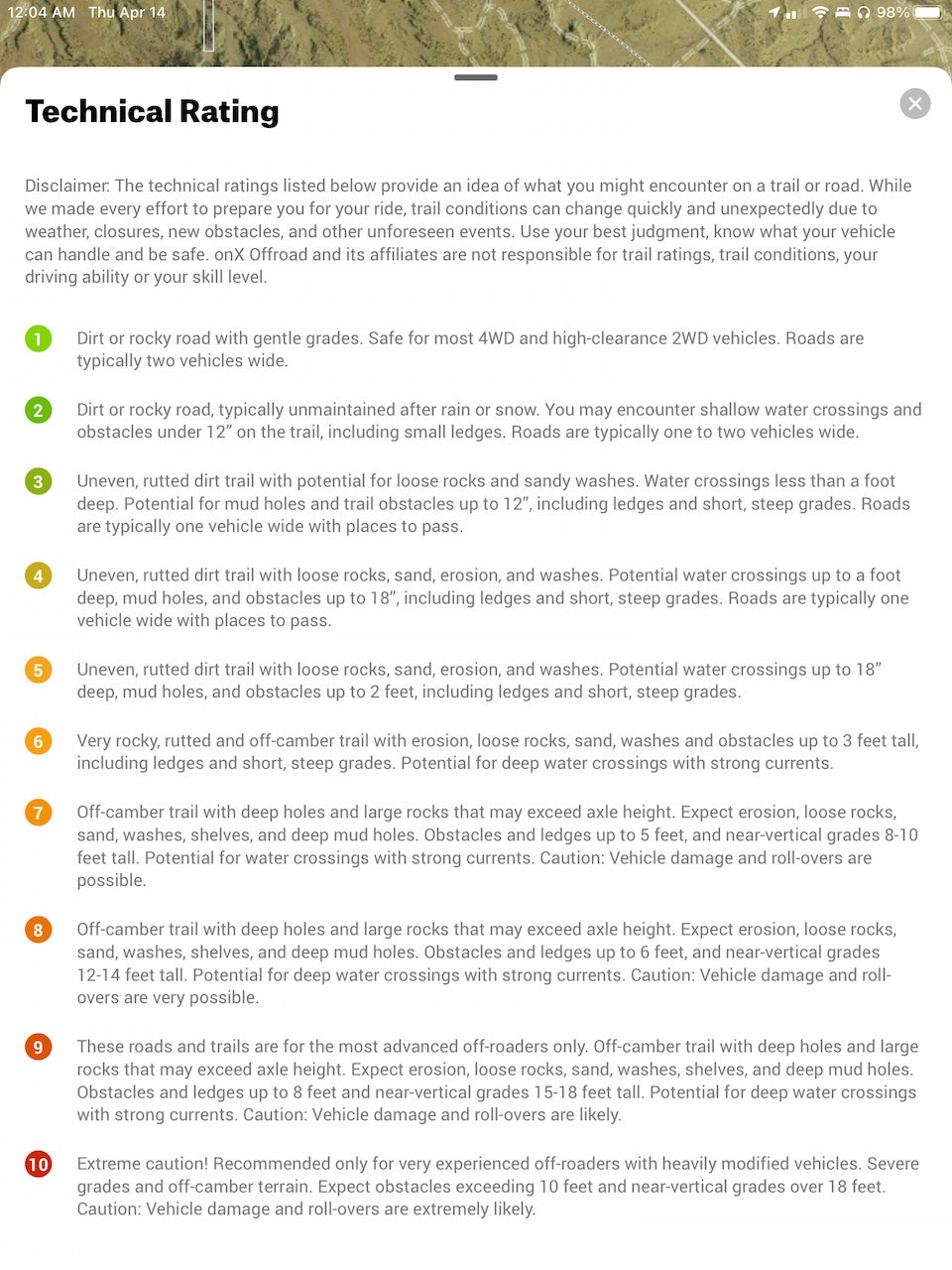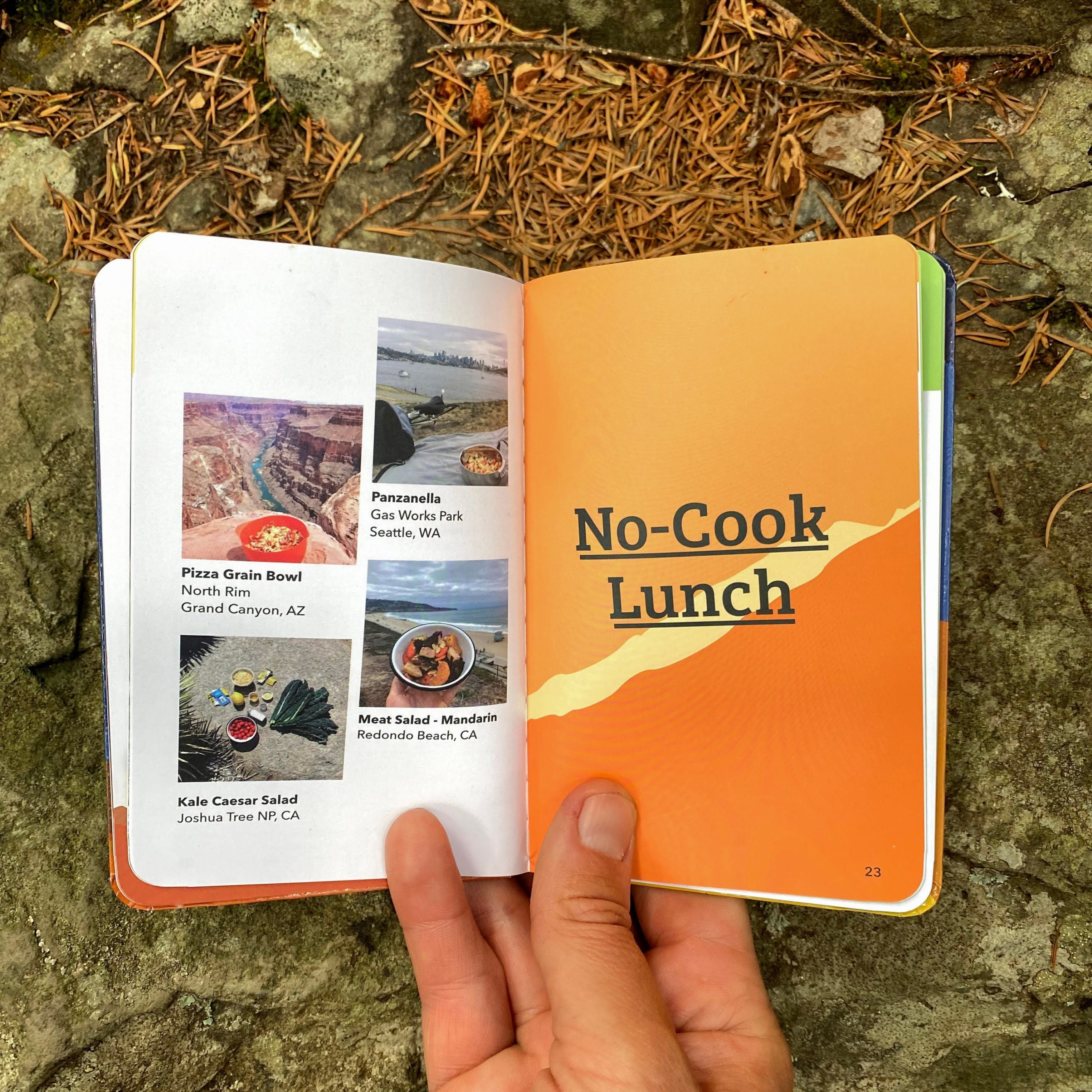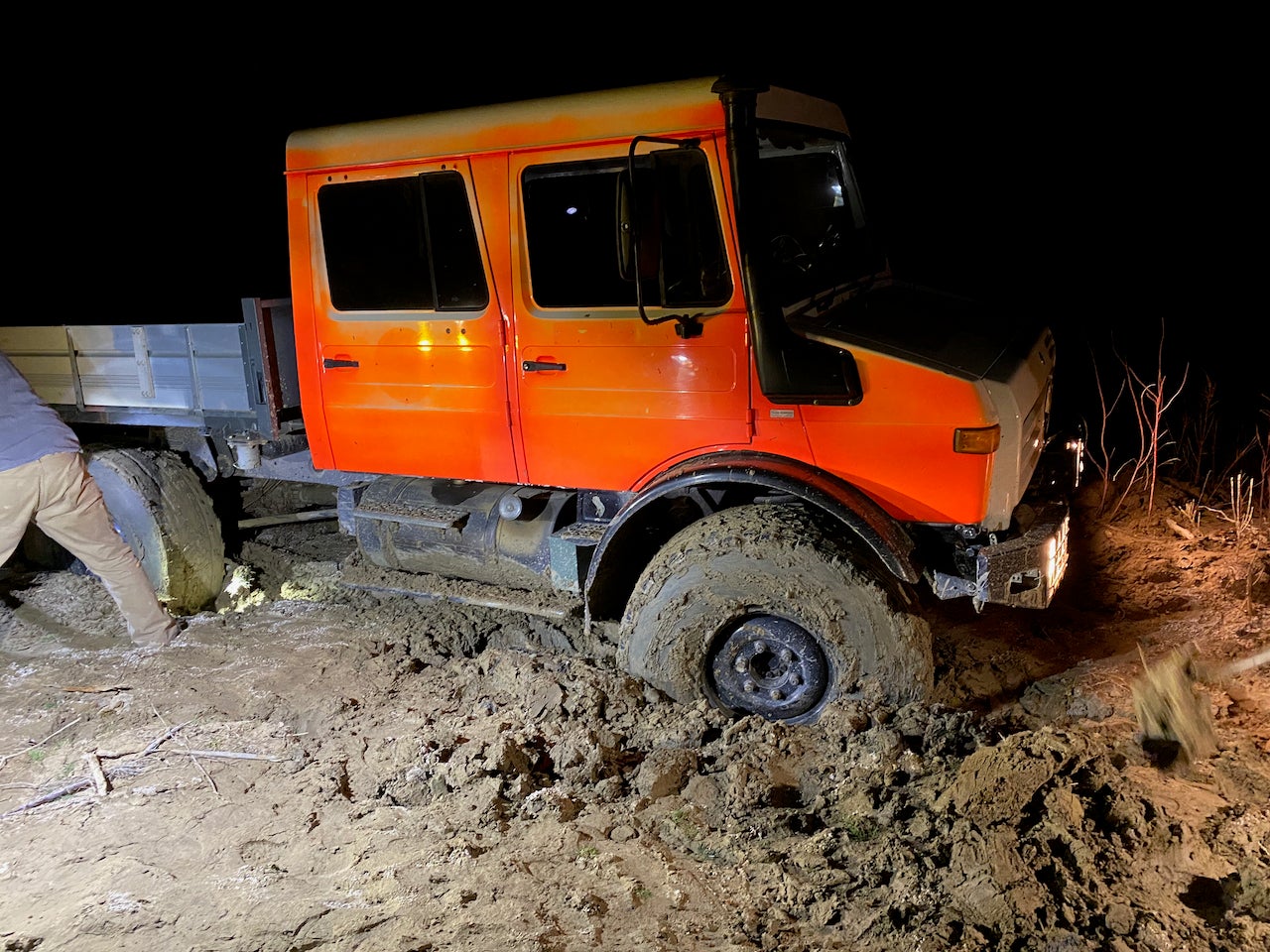Overlanding Trip Planning: Basic Concepts for Safe and Fun Multiday Trips
Doc Rader 04.21.22

If you’re like me, the allure of overlanding trips is irresistible. There’s something about driving into the unknown, sleeping under the stars, and living out of the truck that just calls to me. But before you can take your first overlanding trip, there are a few things you need to know; overlanding trip planning will make your experience more enjoyable.
In this article, we’ll discuss some basic concepts for safe and fun multiday trips in the backcountry by vehicle. We’ll cover topics like what tools you should use, what considerations to take into account when choosing a route, and whether or not you should go overlanding on your own or with a group.
So What is “Overlanding” Anyway?
Overlanding is a form of self-reliant travel in which the goal is to reach remote places by land. It’s usually done with mechanized, off-road-capable transport (could be bicycles, trucks, etc) and can span a few days to more lengthy periods of time (months to years – welcome to the rise of Sprinter vans on IG). Overlanding journeys can even cross national borders (like the Pan American Highway).
Your 1st Overland Trip
While it may seem sexy to cast away the trappings of domesticated life, start off simple. Instagram and TikTok make adventure travel seem 100% awesome all of the time. What you usually don’t get to see are the times it sucks – like when your vehicle breaks down, or the weather is wet for days on end and the trails are a mud bog.
Get your feet wet with a couple of nights out for your first trip. See if you even like this kind of thing before you commit significant time and resources to it and build out an “overland vehicle” and slap on that rooftop tent. Believe me, it can become a money-pit/rabbit hole very quickly.

To start you want to find a place relatively close by, and with services relatively close by. That way if something negative happens, you aren’t contemplating a second mortgage (or selling off your firstborn) to pay for the rescue. One of the awesome things about living in the West is the plethora of trails and routes on all of the open public lands. Conversely one of the downsides is you can find yourself very remote, pretty quickly.
How do you find a place? There are likely social media groups focused on your local area that have good information and experience. In my home state of NM, we have at least a dozen groups, all with different focuses. Some are more interested in technical trails, some like to explore new places, and some focus on full overlanding trip planning. You can also go it alone – part of the fun of adventuring is, well, adventuring.
Paper Maps or Digital?
When I first got started car camping… er… “Overlanding,” all we had were paper maps. Sometimes the map was a sketch and some notes scribbled on a napkin. Now we have all manner of gathered intelligence at our disposal.
You might think that the very nature of having documented areas eliminates the excitement of exploration and have a desire to forge your own path. But the reality is that you are unlikely to find a virgin trail. Many of these trails and locations have been known to off-roaders and hunters for years. The trick is trying to find times when other people are unlikely to be on them.
There are atlases and guide books for many areas that will highlight places local to that area. You can also use some of the digital tools out there like onX Offroad which will show you likely routes in your area, and allow you to download maps of vast areas for “on the fly” planning.
Ophir Pass is CLOSED due to a delivery truck that is stuck and completely blocking traffic. Tow services in route. Unknown length of closure, avoid the area. pic.twitter.com/o5uCDjuRHe
— San Miguel Sheriff (@SheriffAlert) June 18, 2021
Be careful when using Google Maps, though. There have been plenty of times when Google has led people astray, including me. I was complacent when heading out to a hunting camp last season with Beyond Rubicon and the suggested best route ended up being what onX Offroad’s technical difficulty rated a 5 or 6.

I recommend always having paper maps as a backup. Delorme Atlases are great and there is one for each state. I always take one for each state I am planning on crossing through. To protect them, I keep them in an Adventure Tool Company Expedition Map Case tucked next to the passenger seat.
Remaining Budget Friendly
Apart from the cost of your vehicle and upgrades, trips can be pretty affordable (not counting current fuel prices). With a little bit of planning, you can manage food and water pretty cheaply while still eating well. I am assuming you have the training/experience to safely drive off-road, and manage basic emergencies. Budget here refers more to expendables.
Budget-friendly doesn’t mean you have to subsist on ramen or Mountain House meals. If you know how to leverage your ingredients you can have great food anywhere. I carry a set of small recipe books from MONTyBOCA in my food box.

I like to carry a Front Runner Wolf Pack (with the tall lid) to carry all of my staples. This includes things like oils, spices, rice, and beans. These items form the base of most meals and you can spend as little or as much as you want on them. Then, it is a matter of supplementing with perishables to round out the meals – things like fresh vegetables and meats.
Overland Trip Planning
It just comes down to being prepared. You should have the resources to get you into and out of any area you are traveling to. The amount of comfort you want while out there is entirely personal.
Like having enough fuel. I cannot tell you how many trips have been cut short because one idjit in the group started out low on fuel and didn’t bring a way to refuel. The lesson there always bring a few extra gallons of capacity. Plan your entry point to the backcountry so that you pass by gas stations, and make sure everyone fuels up and is topped off.
To go along with your maps, you should have a GPS device. If you are running mapping off your phone, make sure to download the maps. If you are paper-based, get a small GPS unit and learn how to use it – bring the manual. There are plenty of handheld devices that are pretty affordable, and an added benefit is that you can take them on foot as well.
Flat tires are a concern (and really you should be airing down anyway – but that is a topic for another article). You should bring a tire repair kit (and learn how to use it BEFORE you go on the trail). You also should bring an air compressor rated for your tires.
If you know me, you know that I have a background in austere medicine. So, can you guess what I’m going to suggest? Yeah, a first aid kit. Plan on injuries. The probability of an injury happening in town is about the same as on a trip. But the consequence of an injury when remote is much higher. Get some first aid training and at least carry the basics. No, you do not need a chest dart.
An overlooked component of trip planning is assessing the weather. Trails that are wet can be significantly harder than when dry. Get a weather forecast before you go and print out the details. Plenty of online sources out there can give you a pretty decent 10-day forecast. Some of the apps (like onX Offroad) even give you this information on the screen associated with the trail.

The Overland Adventure
There are some amazing adventures to be had. The first step is getting out the door to explore your local areas. You don’t have to always go for an exotic destination. There are likely plenty of places you can go within a few hours of where you live (though the further west you are, the more is available).
Grab a few basic items to enhance your safety and start planning to go to that next great place. Don’t overcomplicate it – most people get analysis paralysis and don’t take the first step. Let us know in the comments how you got started with “overlanding” and any basic tips you wish someone had given you.
Off-Road and Overlanding is sponsored by
To subscribe, visit: https://subscribe.onxmaps.com/offroad/purchase/membership
